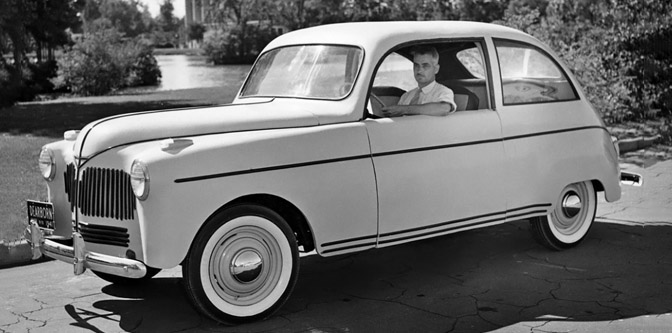What if the Plastic Ford was produced?

If you fancy yourself a Ford Motor Co. historian of any sort, you’ve likely heard of the experimental 1941 Ford with its body made of soybeans (or hemp, or plastic, depending on who you ask). Regardless, Henry Ford was no doubt an innovator, and the idea of a lightweight, flexible and durable-bodied car with a tube chassis being produced in the early ’40s was unheard of. A moonshot. An automotive epiphany, if you will. Heck, the first mass production fiberglass cars didn’t appear for another decade, and they couldn’t take a sledgehammer blow the way Henry’s hemp heap could. So why didn’t this soy-wonder go into production? Entering WWII changed the trajectory of American automobile manufacturing and left this intriguing idea on the back burner permanently.
But what if the war hadn’t come to our doorstep in 1941? What if the soybean Ford went into production, even after the war ended? With that light of a body (the car supposedly weighed under 2000 lbs.), and molded tubular steel chassis, can you imagine the immediate benefit to hot rod rodding performance, drag racing E.T.s and land speed records in the late 40s? It could have been wild…


